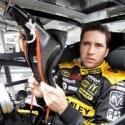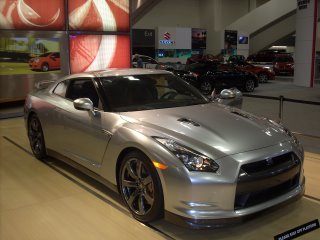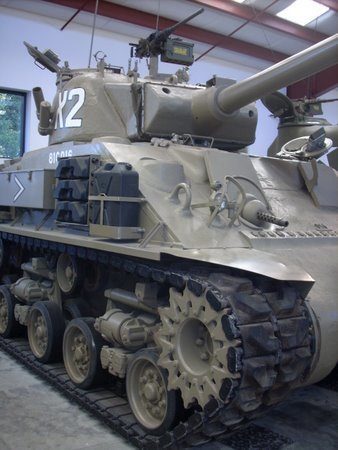
Last night I finished a fascinating book, The Physics of NASCAR by Diandra Leslie-Pelecky, a professor of physics at the University of Texas.
Having spent a great deal of my life driving, racing and fixing cars, I felt that I knew a lot about how race cars function and why – perhaps I did, but I sure know a lot more now than I did three weeks ago. This book is an essential read for anyone wanting to understand the why and how about achieving maximum velocity on 4 wheels.
Once you get past her rather hokey sub-title: “How to Make Steel + Gas + Rubber = Speed” you’ll find very readable chapters that successively reveal the inner workings (and the amazing safety features) of NASCAR’s 2008 “Car of Tomorrow.”
 Each and every aspect of racecar design, mechanical performance and on track behavior are dissected and explained in very understandable terms. Early chapters delve into NASCAR’s push for greater safety and the process of change that brought the “Car of Tomorrow” into being. Chassis construction, metallurgy, paint and decals, aerodynamics, chassis settings, tires, engine building, gearing and the setups for different tracks and speedways are all discussed in great detail.
Each and every aspect of racecar design, mechanical performance and on track behavior are dissected and explained in very understandable terms. Early chapters delve into NASCAR’s push for greater safety and the process of change that brought the “Car of Tomorrow” into being. Chassis construction, metallurgy, paint and decals, aerodynamics, chassis settings, tires, engine building, gearing and the setups for different tracks and speedways are all discussed in great detail.
I found particularly fascination in the evolution of the many of the aerodynamic aspects of the new car design. One of the biggest challenges was to try to prevent the cars from getting airborne when they go into a spin. As most of us are aware, NASCAR cars are set up to turn left – so the racecars tend to spin right when in trouble. When they do spin and the vehicle’s yaw angle approaches 90 degrees, the sideways profile of the car starts to resemble the cross section of an airplane wing. At 150 mph a great deal of lift occurs – with the distinct possibility of a vehicle leaving the track and literally flying into the grandstands. The safety measures and preventative mechanisms that NSACAR’s safety specialists have devised are intriguingly ingenious (a lot of attention is given to creating safety measures that won’t be circumvented for a competitive advantage).
 Another area of analysis I found engaging (and applicable to my own experience) was the chapter on tires. A number of aspects were explained that on comprehension seem obvious but initially contradict popular perception – for example fitting wider tires does not increase the contact patch (as long as car weight and tire pressure remain constant). The illustration at the right shows the effective difference between a narrow tire and a wide tire. Turns out the shape of the contact patch is what matters; it’s how much of the contact patch is – or isn’t – slipping that determines the overall grip and a wider tire will have a small slip area.
Another area of analysis I found engaging (and applicable to my own experience) was the chapter on tires. A number of aspects were explained that on comprehension seem obvious but initially contradict popular perception – for example fitting wider tires does not increase the contact patch (as long as car weight and tire pressure remain constant). The illustration at the right shows the effective difference between a narrow tire and a wide tire. Turns out the shape of the contact patch is what matters; it’s how much of the contact patch is – or isn’t – slipping that determines the overall grip and a wider tire will have a small slip area.
Tire pressures play a vital role in determining winning lap times in NASCAR races and those setting are dictated by the type of track and the speeds at which the cars will be running (which factors how hot the tires will get). On a high banked high speed oval like Atlanta typical Goodyear recommend tire pressures will be 22LF, 20LR, 48RF, and 45RR; compare these to the settings for a flat turned, short course like Martinsville: 10LF & LR, 23RF, and 22RR.
Most of us are aware of drafting in NASCAR and some of the strategies involved in its use, but Leslie-Pelecky goes into interesting detail about the various techniques used including “bump drafting.” Bump drafting involves actually making contact with the car in front to induce more speed for both vehicles. It definitely demands a deft touch when traveling a buck and a half and is not recommended for interstate use (although on a recent trip to Palm Springs I encountered plenty of drafting taking place on the I-210).
 The second half of the book ties much of the theory and physics together as the author “embeds” herself with the Gillet Evernham Motorsports Dodge Team. The inner workings and dynamics of a NASCAR team are fully revealed – I found myself rooting for the team’s success as I read about the trials and travails of car #19, driven by veteran Elliott Sadler. Each team member is spotlighted and get the full picture of their roles in the team’s success and failure at both the Atlanta and Martinsville race. Overall I found the book a very entertaining read. (Amazon.com: The Physics of NASCAR)
The second half of the book ties much of the theory and physics together as the author “embeds” herself with the Gillet Evernham Motorsports Dodge Team. The inner workings and dynamics of a NASCAR team are fully revealed – I found myself rooting for the team’s success as I read about the trials and travails of car #19, driven by veteran Elliott Sadler. Each team member is spotlighted and get the full picture of their roles in the team’s success and failure at both the Atlanta and Martinsville race. Overall I found the book a very entertaining read. (Amazon.com: The Physics of NASCAR)




